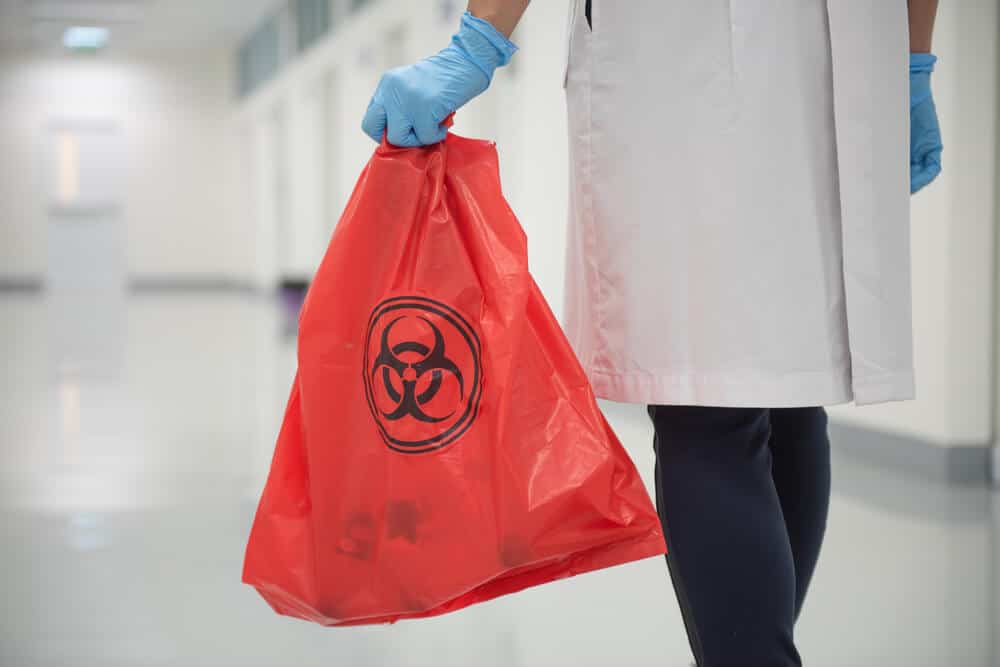Specialist Biohazard Cleaning and Purification for Blood, Bodily Fluids, and Hazardous Materials
The potential health and wellness threats associated with direct exposure to biohazards emphasize the critical demand for precise handling and thorough clean-up. As we browse the detailed landscape of biohazard cleanup, comprehending the nuances of laws, compliance, and the customized equipment at play ends up being imperative in guaranteeing a secure and thorough purification procedure.
Health Risks of Biohazard Exposure
Exposure to biohazards presents substantial wellness threats that can result in extreme consequences for individuals and communities alike. Biohazards encompass a large array of organic materials, consisting of blood, physical liquids, mold and mildew, germs, viruses, and other potentially contagious materials. When individuals enter into contact with these biohazards, whether through accidents, improper handling, or environmental direct exposure, they encounter the threat of having significant diseases or diseases.
One of the primary wellness dangers connected with biohazard exposure is the transmission of transmittable conditions. Bloodborne virus such as HIV, hepatitis B and C, and different bacteria can be present in biohazardous products, posturing a straight danger to human health and wellness. Inhaling air-borne biohazards like mold and mildew spores or coming into contact with contaminated surface areas can additionally cause breathing problems, allergic reactions, and other adverse wellness results.
In addition, biohazard exposure can have lasting health and wellness effects, with some conditions materializing years after the initial call (Blood Cleanup). Consequently, it is vital to prioritize correct biohazard cleansing and purification to alleviate these wellness threats and guarantee the safety and security of areas and individuals

Specialized Educating for Biohazard Cleanup
When it involves handling biohazard clean-up successfully and safely, specialized training plays an essential function in making certain proper decontamination treatments are complied with. Biohazard cleanup needs details knowledge and skills to efficiently alleviate threats connected with bloodborne pathogens, bodily fluids, and harmful products. Specialists learnt biohazard cleaning undergo rigorous instruction on how to safely deal with, eliminate, and take care of biohazardous products to avoid contamination and exposure.
Specialized training for biohazard cleaning covers a series of crucial subjects, consisting of appropriate individual safety devices (PPE) usage, bloodborne microorganism understanding, decontamination techniques, and dangerous waste disposal procedures. Individuals learnt biohazard clean-up are furnished with the needed expertise to analyze contamination degrees, recognize possible risks, and carry out suitable cleanup procedures in conformity with regulative requirements.
Continuous training and education are extremely important in the area of biohazard clean-up to stay upgraded on the most recent decontamination technologies, safety methods, and policies. By buying specialized training, biohazard cleaning experts can efficiently react to emergency situation cleanup scenarios and secure both public health and the setting.
Value of Proper Purification Methods
Making use of appropriate decontamination strategies is important in biohazard cleanup to successfully minimize and get rid of hazardous products wellness risks. Reliable purification not just makes sure the elimination of noticeable traces of blood, bodily fluids, and various other biohazards yet also targets invisible virus that might pose severe wellness risks otherwise properly eliminated. By adhering to strict purification methods, educated experts can significantly minimize the threat of exposure to harmful microbes, infections, and bacteria that might cause infections or diseases.
Correct purification techniques include using customized equipment and disinfectants that are particularly created to counteract biohazards effectively. Complete cleansing and disinfection of polluted locations are vital to prevent the spread of pathogens and guarantee a risk-free atmosphere for passengers. In addition, the proper disposal see here now of biohazardous waste adhering to purification procedures is important in protecting against contamination of various other surface areas or people.

Tools and Tools for Safe Cleanup
When dealing with blood, bodily liquids, or harmful products, biohazard cleaning specialists depend on specialized equipment to minimize exposure risks and thoroughly sanitize the damaged area. Furthermore, biohazard cleansing kits consisting of anti-bacterials, absorbing materials, and biohazard bags are utilized to securely dispose and consist of of contaminated items.
Advanced cleaning devices like hospital-grade anti-bacterials, HEPA-filtered vacuum cleaners, and misting machines are utilized to sterilize surface areas and get rid of biohazards efficiently. Specialized devices such as sharps containers and biohazard garbage disposal bins are made use of to securely manage sharp objects and go to these guys biohazardous waste materials. By using the best devices and devices, biohazard cleansing specialists can make certain an extensive clean-up procedure that focuses on security and lessens wellness threats for both employees and passengers of the damaged space.
Rules and Conformity in Biohazard Cleansing
Appropriate adherence to guidelines and conformity requirements is paramount in biohazard cleaning to ensure the safety of both personnel and the setting. Government agencies such as OSHA (Occupational Safety and Wellness Management) and the EPA (Environmental Defense Company) have established specific standards for biohazard clean-up treatments to lessen health and wellness dangers and environmental contamination. These guidelines cover an array of aspects consisting of the handling, transport, and disposal of biohazardous products, in addition to the required training and protective tools required for personnel entailed in the clean-up process.
Biohazard cleansing business should stay current with these policies to guarantee that their operations meet the called for security standards. Failing to adhere to these regulations can cause extreme effects, including fines, lawful action, and endangering the wellness of individuals and the environment. By complying with stringent laws and compliance steps, biohazard cleansing companies can effectively alleviate risks and make sure a complete and risk-free cleanup procedure for all parties included.
Verdict
To conclude, biohazard cleansing and decontamination need customized training, proper strategies, and adherence to regulations. Exposure to blood, physical liquids, and unsafe materials presents substantial health dangers, making it crucial to use the ideal tools and tools for risk-free clean-up. By adhering to strict protocols and guidelines, specialists can properly reduce the risks connected with biohazard direct exposure and ensure the security of both themselves and others.
As we navigate the complex landscape of biohazard cleaning, recognizing the nuances of regulations, compliance, and her response the customized equipment at play becomes critical in guaranteeing a risk-free and complete purification procedure. (Blood Cleanup)
When it comes to handling biohazard cleanup efficiently and safely, specialized training plays a fundamental role in making sure correct purification treatments are adhered to.Making use of appropriate purification methods is important in biohazard clean-up to successfully minimize and remove dangerous materials health threats. In addition, biohazard cleansing packages having anti-bacterials, absorbing materials, and biohazard bags are utilized to safely contain and dispose of contaminated items.
Federal government agencies such as OSHA (Occupational Safety And Security and Health Management) and the EPA (Environmental Defense Company) have developed particular guidelines for biohazard cleaning treatments to minimize health risks and ecological contamination.
 Alfonso Ribeiro Then & Now!
Alfonso Ribeiro Then & Now! Gia Lopez Then & Now!
Gia Lopez Then & Now! Tiffany Trump Then & Now!
Tiffany Trump Then & Now! Traci Lords Then & Now!
Traci Lords Then & Now! Dolly Parton Then & Now!
Dolly Parton Then & Now!